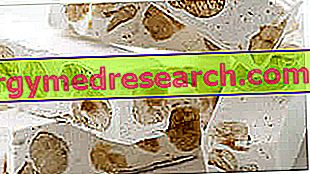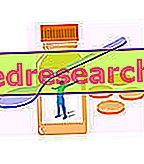A door to the most secret rooms of our body and our mind
Author: Dr. Marco Mancini - Personal Trainer - Doctor in Clinical and Health Psychology
Introduction
When we think of our musculature, what can come to our mind is that structure which through movement and action allows us to interact with the surrounding environment, a system symbolizing activation and dynamism.
Thanks to the encouraging cultural diffusion of the concept of psychophysical well-being as a preventive factor of organic diseases and psychological problems, and to the greater attention we pay to ourselves and to the improvement of the quality of life, many of us actually take care of preserving in good health the musculature and not only through physical exercise.
Keeping the muscles in good condition, or better to say "tonic", preserves us from the risk of some common and thus preventable disorders, such as postural problems, myalgia or joint pain.
Physical activity: any type of body movement produced by muscle contraction that increases caloric expenditure.
Physical exercise: category of physical activity, quantified by volume, intensity and frequency in which the movements are structured repetitively to improve or to maintain one or more components of the state of form.
Such information has now become easy to access, so if we think about improving our physical condition, concepts like conditioning, hypertrophy, muscle elasticity start to be familiar.
In this case, we note how the achievement of psychophysical well-being is associated with the idea of muscle stimulation, therefore it passes through all those training methods that aim to increase muscle performance.
In the imagination of some of us, a beneficial intervention of the muscular system implies the hyperstimulation of the muscle itself.
What we now propose to consider is actually something different: the achievement of psychophysical well-being through relaxation and muscle relaxation .
As well as physical exercise, muscle relaxation is also used for two purposes (Fig.1):
1. therapeutic;
2. performing.
Figure 1

To understand how muscle distension can act on organic decompensation, it is necessary to clarify the physiological mechanisms and the relationships underlying these systems:
- Muscular apparatus;
- Nervous system;
- Endocrine system.
The distension, in addition to acting on the muscular system, also determines global existential modifications on the nervous system, with relative consequences both on a physical and emotional level; in this direction it is possible to recognize the distinct value between relaxation techniques and gymnastic techniques of "movement therapies".
The ability to manage emotions is the one that in a therapeutic perspective is fundamental to prevent imbalances in the neuro-vegetative system, and to avoid that this remains blocked in a form of chronic activation with consequent hormonal dis-regulation and cognitive modification of the meaning of some environmental stimuli. The situations we interpret as a source of aggression, in fact, leave our organism under a permanent threat condition, from which it is possible to exit through relaxing techniques specifically aimed at treating anxiety and "toxic" stress.
On the other hand, as regards the relationship between relaxation techniques and relaxation / increase in performance, we must know that distension and consequent relaxation favor the perception of the body schema with a consequent improvement in the somato-aesthetic sensitivity. The first thing that can come to our mind is how the improvement of this ability can, particularly in athletes, improve the control and execution of fine movements, with a qualitatively superior rendering of the technical gesture.
A greater sensitivity to changes in muscle tone, and an acute perception of the various districts, are, without doubt, some of the strengths of the conscious athlete, able to detect the onset of fatigue and to optimally manage their level of activation.
We report to follow the main techniques that provide for muscle relaxation (Fig. 2).
Figure 2

Jacobson's progressive relaxation
It's a self-relaxation technique that can be performed anywhere, so it's easy to practice.
In the initial phase it is necessary to learn the technique from a Trainer, later you are able to perform it yourself, so it turns out to be a technique that provides complete autonomy to the practicing subject.
The purpose of the technique is to induce modifications on the neurovegetative system through muscle relaxation.
It is often used for anxiety control considering its close relationship with muscle tension.
It proceeds through phases of muscle tension-relaxation to induce the progressive relaxation of all the muscular districts, starting from the arms to end at the feet, therefore a general relaxation of the whole body.
Autogenic Training
Psychic commutation:
To commute means to change course, to change a state of affairs which is by now stable.
From a psychological point of view it means changing ingrained mental attitudes, abandoning habits, using thought and attention in a different way.
The method involves bringing the subject to the achievement of the switching state (see box on the right), consisting of a good level of relaxation and calm that favors the recovery of psychic energies, stimulating at the cognitive level the capacity for self-observation through mobilization of some thoughts and feelings that usually occur outside the field of consciousness.
JH Schultz (creator of the TA), in his studies on hypnosis during his long clinical activity, noticed that in all the subjects subjected to hypnosis two precise sensations were always referable: heaviness and heat. From these two sensations Schultz left to elaborate the TA
Heaviness and Heat are caused by changes in muscle tone; the feeling of heaviness is the expression of a muscular distension and the perception of heat the consequence of a hyperemia due to distal vasal.
The hypnogenic effect of muscle relaxation is another general physiological phenomenon, the decrease in muscle tension considered from the point of view of sleep physiology is one of the basic phenomena that accompany resting, internalization and passive attitude.

The peculiarity of this method is that the psychic concentration exercises, once learned by a Trainer, can be reproduced independently, as opposed to hypnosis that usually uses the therapist's behavior which induces the patient's state of relaxation.
Biofeedback
Basically it is a self-monitoring technique which aims to provide the sportsman with the means to regulate his emotional responses, trying to optimize the mental approach to performance by eliminating stressors.

1- Somatic level: modifications on the neurovegetative and neuroendocrine stress response;
2- Psychic level: cognitive evaluation and manageability of stressors.
Biofeedback trains the subject to self-regulate certain physiological functions by means of some electronic equipment capable of detecting these functions and sending back to the same information (feedback) able to increase awareness of the activated physiological responses.
By passing through an increased awareness of physiological responses, the subject becomes accustomed to managing them in the best way.
Hypnosis
Technique in which, through the intervention of an operator, a particular mental state is induced in the subject (hypnotic trance); at this stage the narrowing of the field of consciousness takes place, favoring the expression of unconscious dynamics.
At the neurophysiological level, hypnosis passes from a level of cortical inhibition that the stronger it is, the greater the depth of hypnosis.
Schultz, in his studies that led to the putting of his method (Autogenic Training), had identified how during hypnosis patients reported feelings of heaviness and heat resulting from changes in muscle tone.
The physiological effects activated by hypnosis are: changes in heart and respiratory rate, blood circulation, pupil diameter. However none of the aforementioned modifications turns out to be peculiar to the technique and the quality of the modifications is extremely subjective.
To conclude
A greater knowledge of oneself and the potential of one's own body, as we have seen, also passes from an "active" mastery and control of what by definition seems to be the opposite of control and awareness, or use muscle relaxation as a passepartout for the control of the deepest layers of our ego and our organism, levels that are normally beyond our control and the possibility of access.
Knowing how to interact with these profound levels, in the event of imbalance and discomfort we will have powerful tools that can help us restore our well-being.
And now, after stimulating our mind on the importance of relaxation and relaxation ... we stimulate our body and learn to appreciate its benefits.
Glossary
Myalgia : Pain localized to one or more groups. The affected muscles show contracted, sore on palpation, the movements cause pain. Myalgia can be traumatic, viral, rheumatic or due to fatigue.
Somatoesthesic sensitivity : Ability of the organism to perceive endogenous stimuli (coming from the inside of our body).
Vascular distension hyperemia : Increase in the mass of blood circulating in the blood channels resulting from the increase in the diameter of the canal.
Stressors : Stressors (which are a source of stress).
Io : According to the psychodynamic perspective, the ego is a psychic component that represents consciousness and that continuously mediates between the instances of the id (part that expresses instinctual drives) and the superego (which expresses what would be right to do according to the values, norms and prohibitions that we have learned and internalized since we were children).
Bibliographical references:
We thank Dr. Margherita Sassi (Sports Psychologist - Psychotherapist) for the useful suggestions given to the author during the writing of this text.



